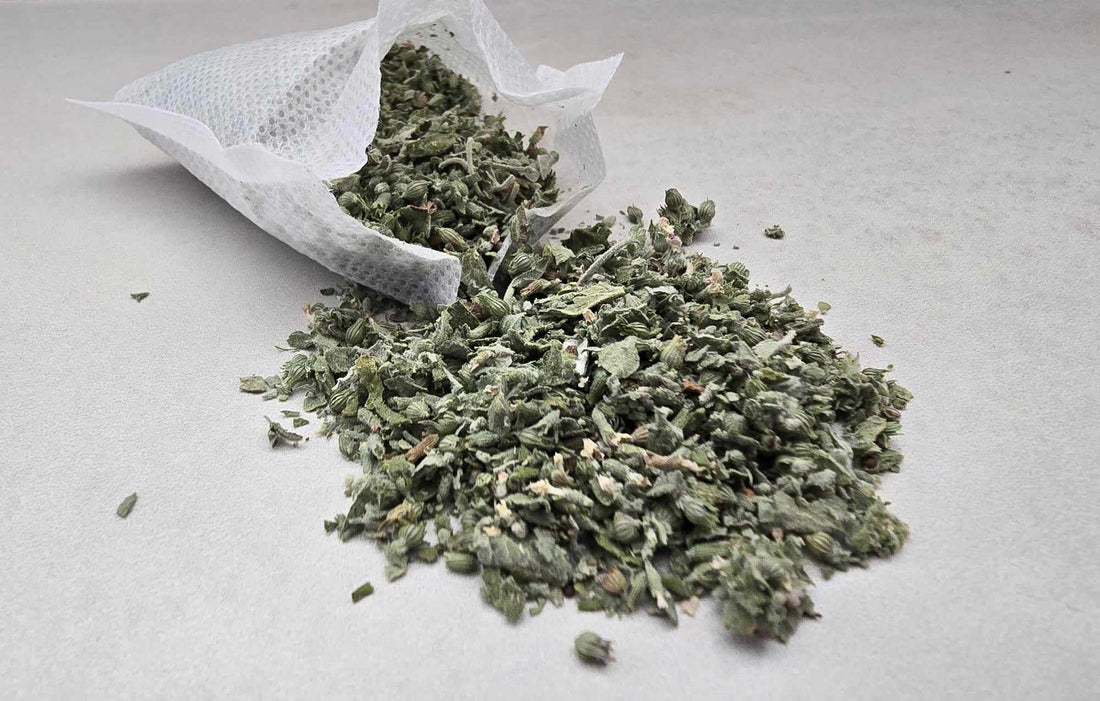
"From Desert Garden to Playtime: Making Catnip Toys with Locally Grown Catnip"
Annmarie Palazzola-HolbrookShare
Did you know you can grow, dry, and harvest catnip in the desert? And infuse it with homemade cat toys for your cat!
I will show you how to take a catnip seed and grow it into a beautiful, high-quality, fragrant plant. In this hot desert climate.

4theluvofdog is a participant in the Amazon Services LLC Associates Program, an affiliate advertising program designed to provide a means for sites to earn advertising fees by advertising and linking to amazon.com Please read my full disclosure.
First of All -What Is Catnip?
The Catnip (Nepeta Cataria) plant is a perennial herb. Perennial, means the top of the plant will die in winter but re-grow a beautiful lush plant in spring. The catnip plant is a member of the mint family. It has highly fragrant leaves and flowers.
It doesn't just stimulate play in cats. It's an AMAZING plant that attracts beneficial insects like bees and butterflies to the garden while keeping away pests.

(Image Credit: Annmarie Holbrook)
Why Should You Grow Catnip Yourself?
Growing catnip at home can be a rewarding and fun experience. "Just think of the fresh abundance of catnip you can have right at your fingertips." It's also a great way to create personalized, homemade cat toys that your cats will love.
You want to choose organic seeds. You do not want to use any pesticides. EVER. The only product that I have used is Diatomaceous Earth. (food grade) And usually in the late winter. In early spring before the plant starts to grow. I sprinkle over the top in between watering.
Diatomaceous Earth is a non-toxic pest control. It is a powder made from the sediment of fossilized algae found in bodies of water. The dried sediment produced from these fossils is also very high in silica.
Diatomaceous earth helps with keeping whitefly and spider mites from homesteading in the soil. Choose catnip varieties that are known for their hardiness and drought tolerance.
What will you need?

(Image Credit: Annmarie Holbrook)
- Organic seed pack (in the beginning, until your plant can produce its own seeds) See photo above
- Sandy soil
- Worm casting or organic garden soil
- Large well-drained garden pot or you directly put the plants in the ground (Ensure that the ground has been free of pesticides or chemicals)
Before you Plant your Catnip Seeds
Catnip seeds are tough and need to be stratified before you plant them. This is a simple process.
What has worked for me is to freeze the seeds, overnight. The next day I place the seeds in water to sit overnight. (24 hours) That simple process will ensure a good harvest.

(Image Credit: Annmarie Holbrook)
Now your seeds are ready! You can plant them indoors or outdoors. If planting outdoors, plant in rows after the last chance of frost. Catnip seeds can be planted in the spring or early fall.
If you are planting indoors, place the seeds in a sunny location, during the first stage-of-growth. Once the sprouts come up and are close to 2" you can bring them outside.
Your catnip plants will thrive in sandy loam soil. But I like to add a small amount of worm castings to the sandy soil. I have had success with this process.

(Image Credit: Annmarie Holbrook)
If you decide to plant your catnip seeds in pots, you want to place the pot directly onto the ground. You will get a bigger and better yield each year.
The catnip plant will reseed the same spot and return each year.
When your seedlings begin to grow, it is recommended to thin them out to one plant every 18". Catnip grows best in full sun. In hot desert conditions, or in when a plant is planted in a pot, (5 gallon or larger) water more often.


(Image Credit: Annmarie Holbrook)
When is Your Catnip ready to harvest?
"Ah, the time has finally come to reap the benefits of your catnip plant." The aromatic smell, the flowers and the lush green leaves.
Harvest when the plant is flowering, around mid-summer. This is when the leaves are at their most fragrant and contain the compounds that cats LOVE. Harvest late morning after the dew has dried.
I began the harvesting when the flowers appeared. The plant should be six inches or taller. Some catnip plants can grow close to 4 feet tall, in optimal conditions.

(Image Credit: Annmarie Holbrook)
During the harvesting process, the stems are loaded with lush green leaves.
I was harvesting when I came across this giant praying mantis. He was waiting for lunch, on top of some mint plant buds in bloom. Yikes! I left him alone. LOL

(Image Credit: Annmarie Holbrook)
Ensure your cutting tool is always cleaned and disinfected before you use it to cut the stems. Remember, your feline friend will be sniffing, biting and rolling around in the dried leaves.

(Image Credit: Annmarie Holbrook)

(Image Credit: Annmarie Holbrook)
As you inspect each stem, take off any old dead leaves. This particular bundle was the last of the harvest. "Look at those buds!"

(Image Credit: Annmarie Holbrook)
This example above shows the stems cleaned up of old leaves and ready to be placed in the shed, for drying.
"Notice the beautiful buds!" A fragrant mid-summer pick.
"Your cats will be opening cupboards for these catnip buds." Guaranteed.
Drying Catnip

(Image Credit: Annmarie Holbrook)
You can hang the bundle upside down in a dark well-ventilated area. Or you can stack bundles on ventilated racks, as seen in the photo above. Each process takes 1-2 weeks to dry, depending on where you live.
You can dry the catnip in a shed if you live in a dry climate like me. If you live in a region where it is humid, you will want a closed ventilated area away from moisture. This will ensure that your catnip plants will dry completely and be ready to use.
Once your catnip is dried completely, crumble the leaves and buds off the stems and store them in an airtight container away from direct sunlight.
Now that you have fresh catnip, you can make DIY toys for your feline friends to enjoy for weeks.
Let's make some DIY Homemade Cat toys, infused with Catnip
These DIY Homemade cat toys are easy to make and require no sewing.
Catnip Pom-Pom
"Cats "absolutely" love, LOVE yarn." It mimics the hairs around their mother's teats, which keeps them interested. These yarn balls were super easy to make.
Note: As always, supervised play is essential. DO NOT leave this yarn toy out unsupervised. Cats tend to want to eat at the material they are attracted to. This type of material, if ingested may cause stomach issues.

Materials:
- Yarn
- empty toilet paper roll or bendable cardboard
- Scissors
- Dried fresh catnip



Instructions:
- Wrap yarn around your fingers or a small piece of cardboard multiple times to create a thick bundle.
- Carefully slide the bundle off and tie a piece of yarn tightly around the middle.
- Cut the loops on both ends to create a pom-pom.
- Fluff the pom-pom and sprinkle dried catnip inside the strands.
- Trim any uneven edges and toss the pom-pom to your cat.
Catnip Re-fillable Scrunchies



Materials:
- Scrunchie with a zipper open compartment
- Mini crinkle toy
- Dried fresh catnip
Instructions:
- Grab your scrunchie
- Place 1-2 crinkle toys into the scrunchie
- Place your catnip-filled no-mess bag into the scrunchie
- Close the scrunchie by zipping up the compartment.
- Your cat is now ready to have hours of fun.
NOTE: As with any food, sensory, or toy product, it's advised to consult with your veterinarian before starting a new diet or snack implementation for your pet. Some pets may have pre-existing health challenges. We recommend that you supervise play with any new cat toy you introduce.
Final Thoughts..
"What a great experience it is to grow catnip." A great way to provide your cats with hours of entertainment, knowing they will get the highest quality catnip, grown in your backyard. Plus, making fun DIY homemade toys to infuse your fresh catnip in.
Let me know in the comments what your experience is in growing catnip. What would you do differently? Do you have any DIY homemade toy ideas to share? I would love to hear from you. -Annmarie
The Legal Section
All content on this website, including text, images, and original recipes, is the intellectual property of 4theluvofDog.com unless otherwise stated. Unauthorized use, reproduction, or distribution of any content from this site without written permission is strictly prohibited and may result in legal action under the Digital Millennium Copyright Act (DMCA) and applicable copyright laws.
If you would like to share a post, please link directly to the original content and provide proper credit. Copying and pasting full content is not allowed.
© 4theluvofDog.com | All Rights Reserved
